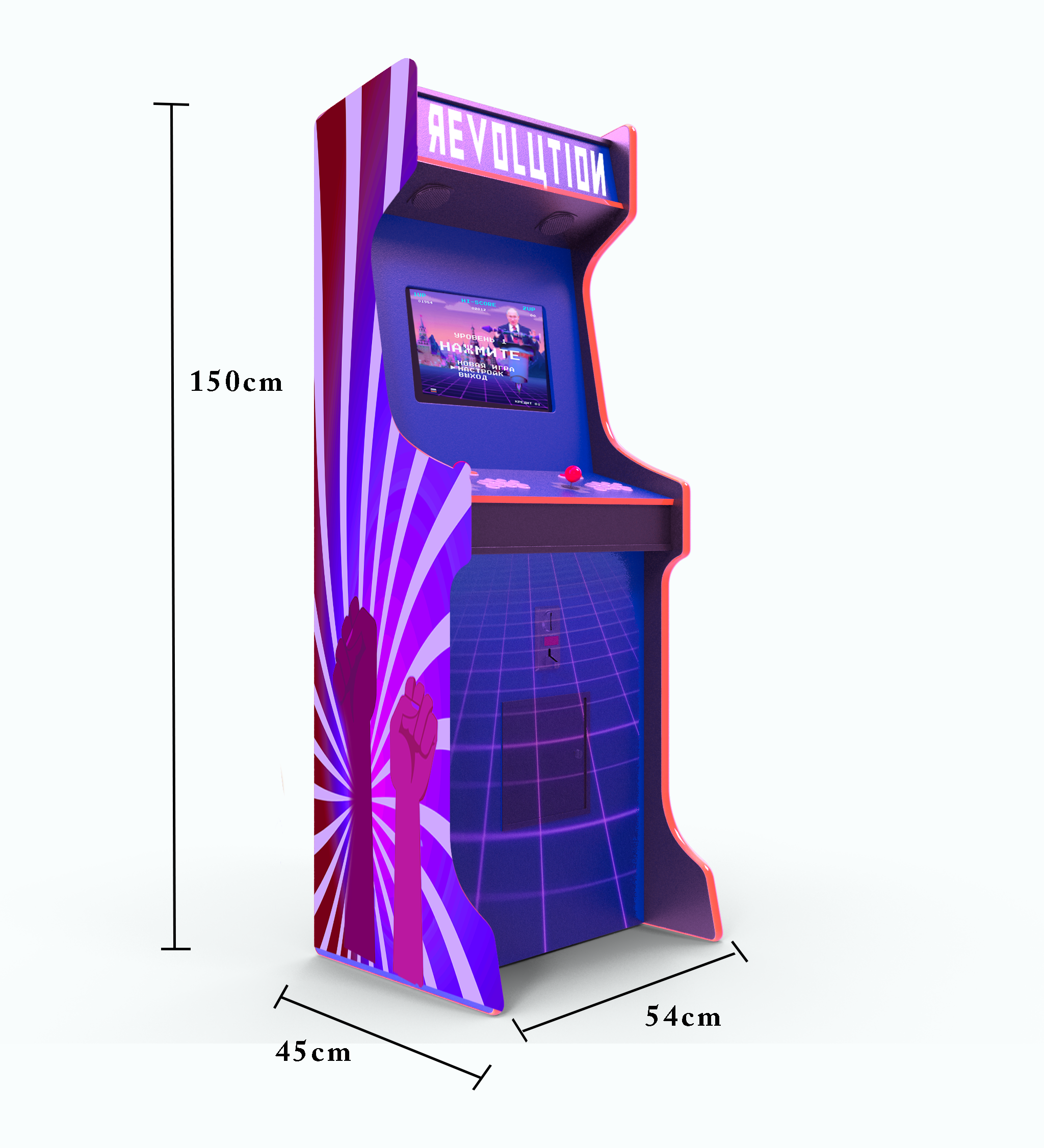Some artworks can only exist as plans until or unless they are sponsored by a gallery space. This is a practical issue with creating: otherwise the artist’s studio fills up, leading to further costs for storage, materials, and energy – all of which affect the sustainability of a practice. This is an example.
For the Pixelated Politicians series I wondered whether display within consoles and in an arcade-like setting would deepen the criticality. It becomes slightly immersive for the viewer. The arcade would consist of between six and ten machines to display at least five regional variations, as well as a map and weapon selector. Presenting the screens as a game, I decided to call it Revolution – a title that can be read in several ways. At first glance it suggests change and agency, but it also implies rotation: a cycle that continues.
The console graphics reinforce this duality. The clenched fists radiating from a sunburst can be read as revolutionary propaganda, yet the same motif evokes a circus canopy. This ambiguity is deliberate: politics is staged as both uprising and entertainment, a theatre of gestures where the crowd watches but never acts. The circus inflection tips the work into satire – revolution becomes performance, consumed rather than realised.
The functionality of the arcade machines deepens the critique. Each console includes the full apparatus of play – joystick, buttons, coin slot – yet none are connected. The player can touch, move, and press, but the system never responds. On screen, only minimal animation loops: the flashing PRESS START. This refusal of interactivity transforms the machines into non-playable sculptures, glowing with nostalgic promise but fundamentally hollow.
By simplifying the cabinet art to fists and bursts, the design acquires universality. Each machine could be reskinned with different palettes (UK, DPRK, Russia, USA, China), echoing how arcade games were localised for different markets. Despite surface variations though, the mechanics remain identical – another reminder that, whichever version you play, the outcome is always the same.
Together, the graphics and the disabled controls complete the metaphor. Revolution is presented as a global franchise: seductive, noisy, and brightly packaged, yet unchanging at its core. The arcade format lures the visitor into participation, only to frustrate their agency. In doing so, it stages politics as spectacle — cyclical, performative, and ultimately non-interactive.
